Examining the Gospel of Matthew 2
Mike Ervin
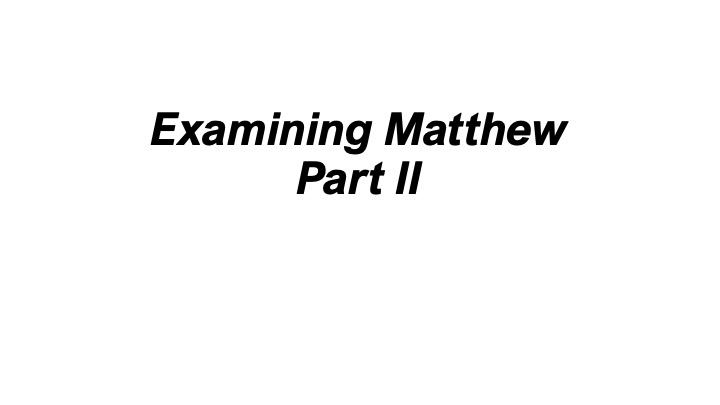
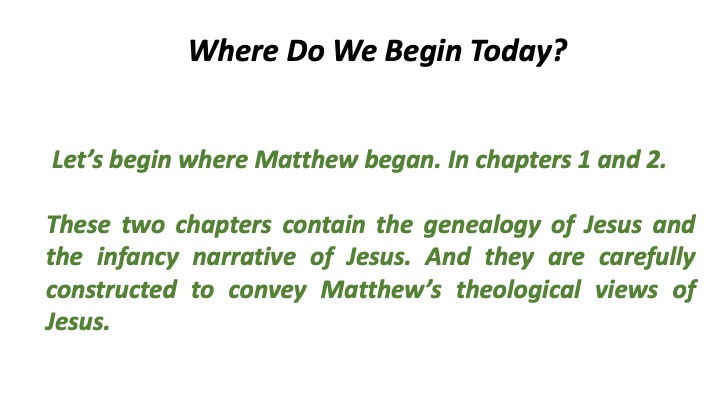
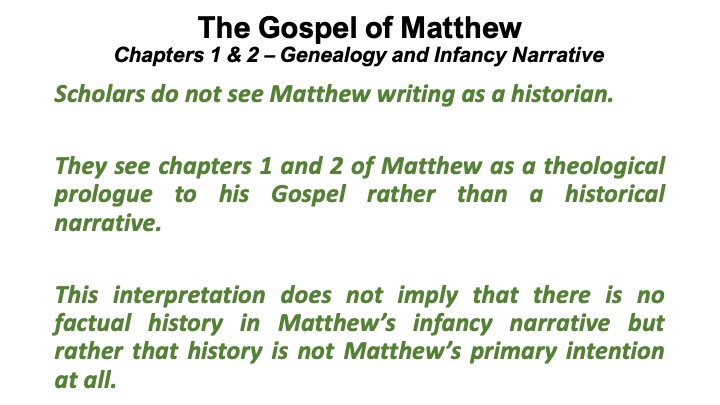
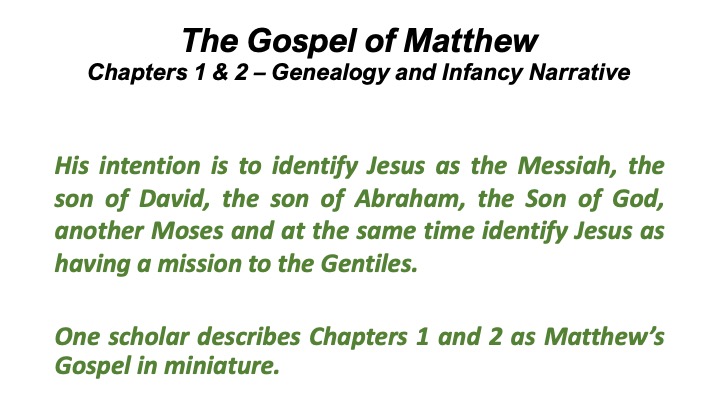
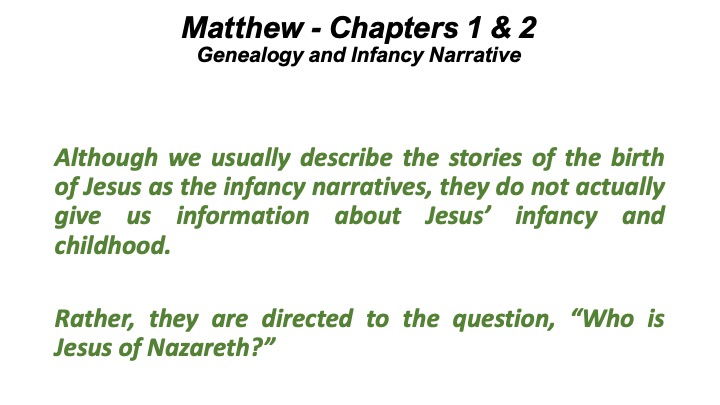
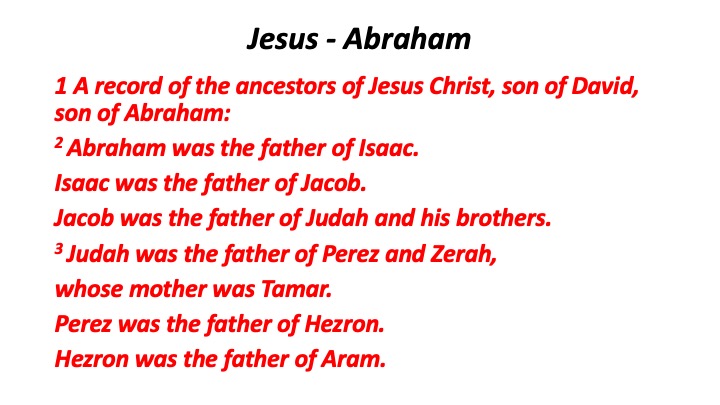
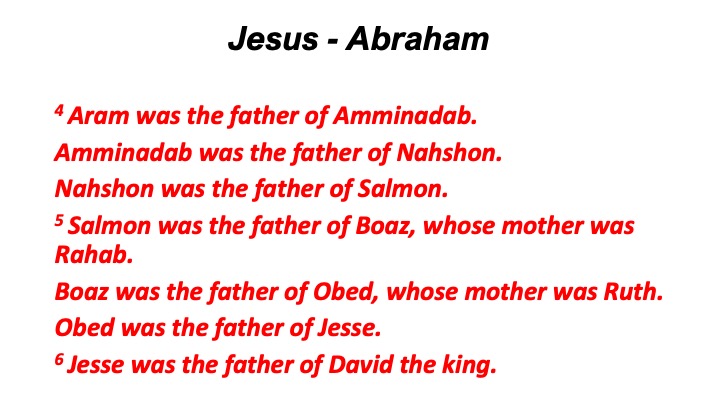
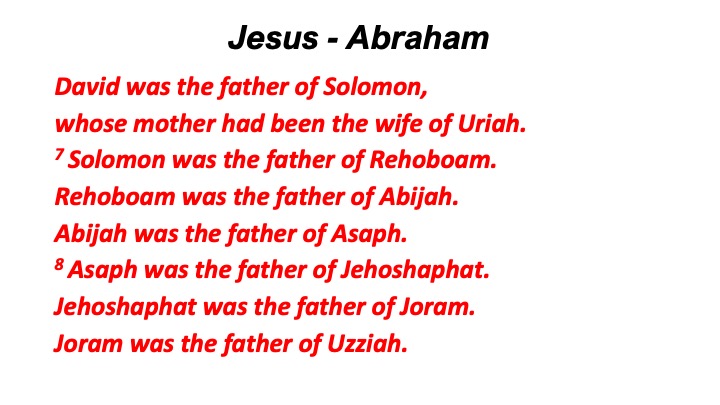
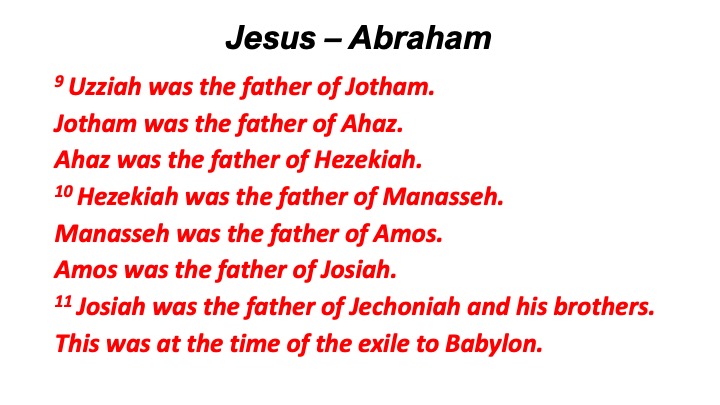
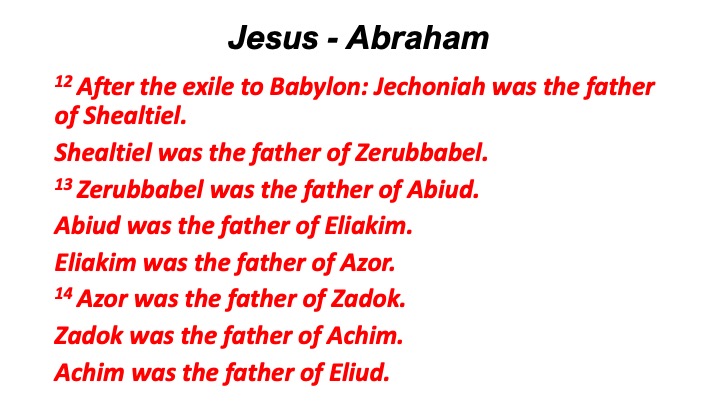
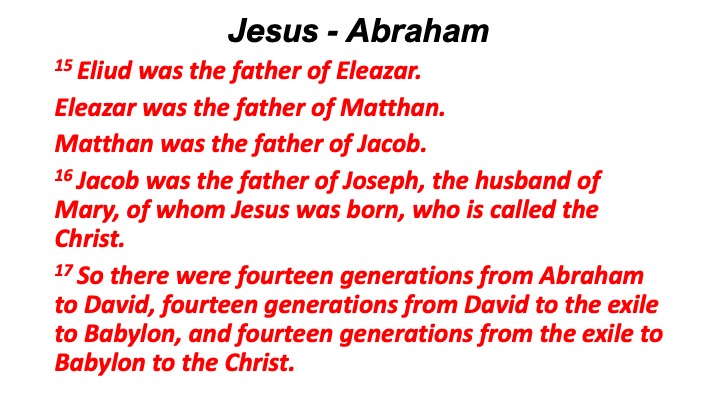
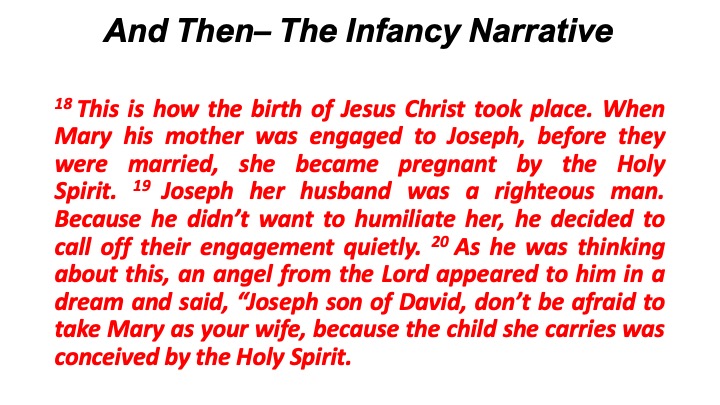
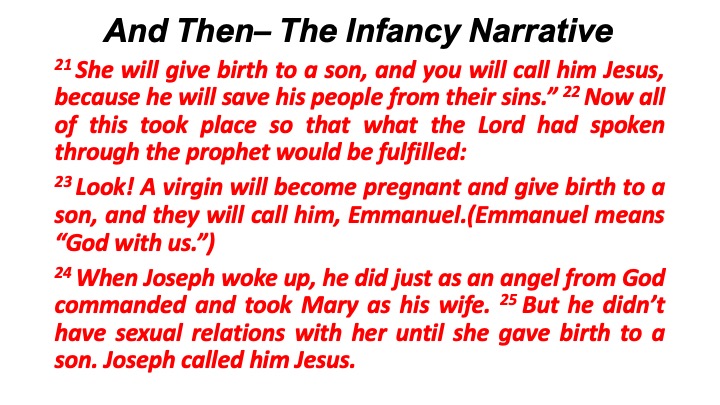
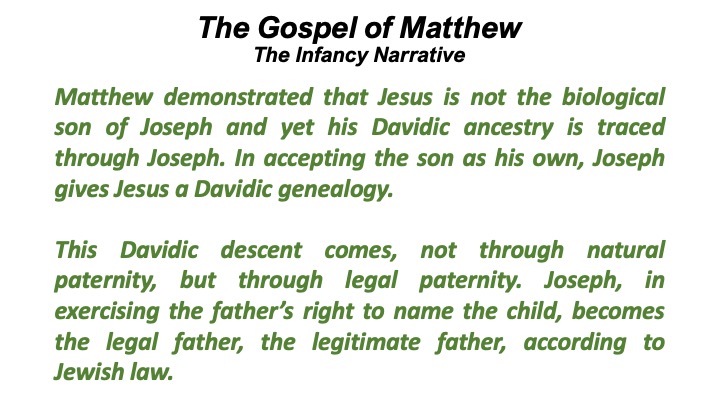
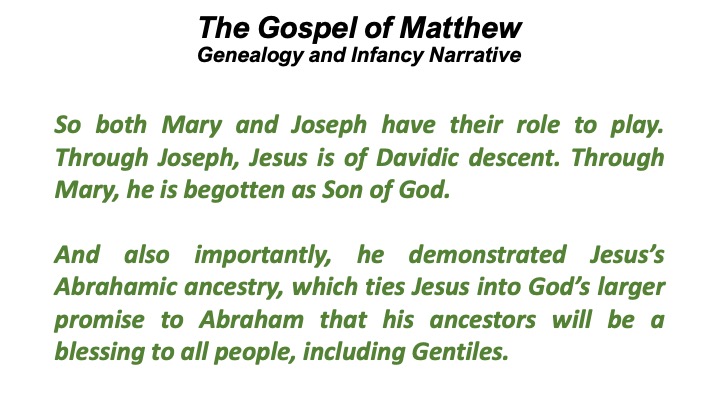
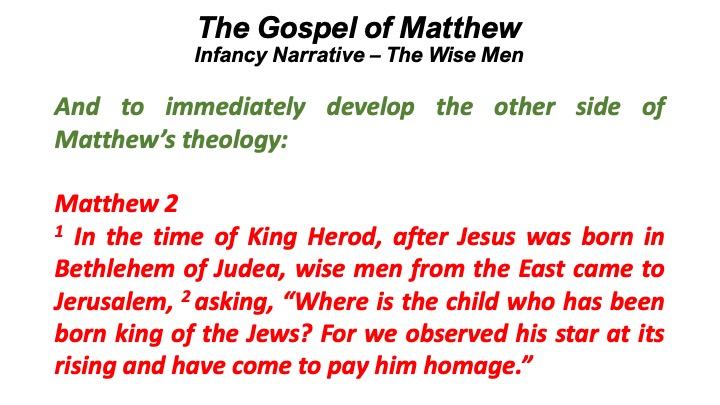
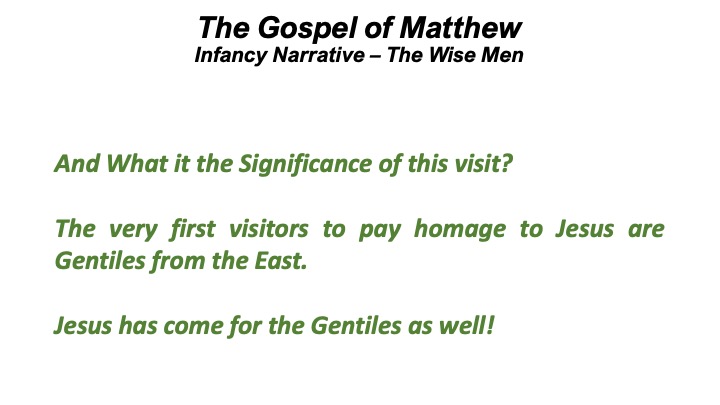
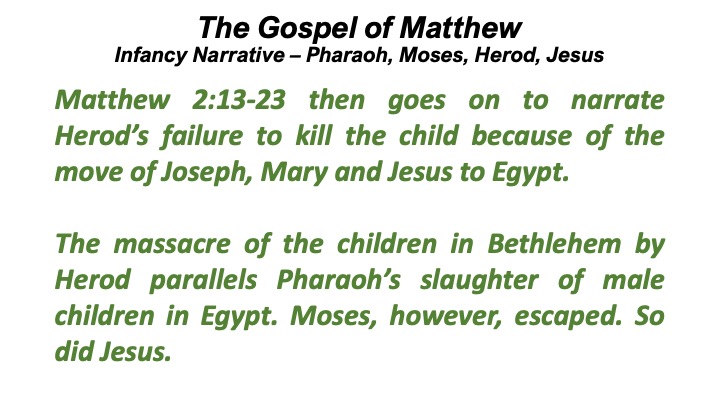
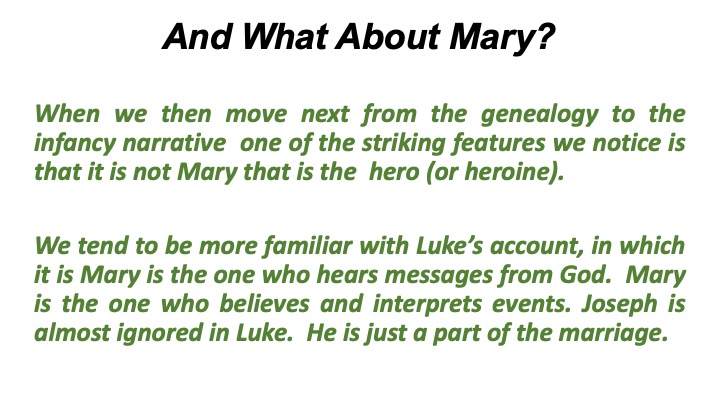
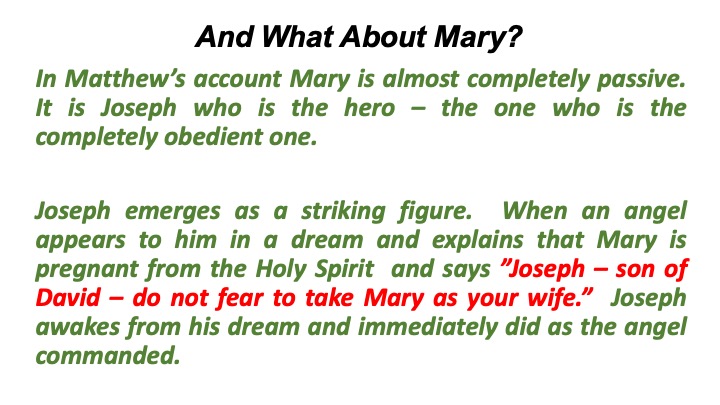
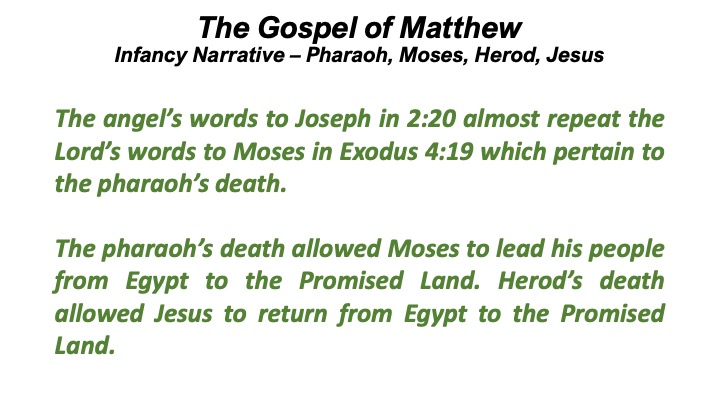
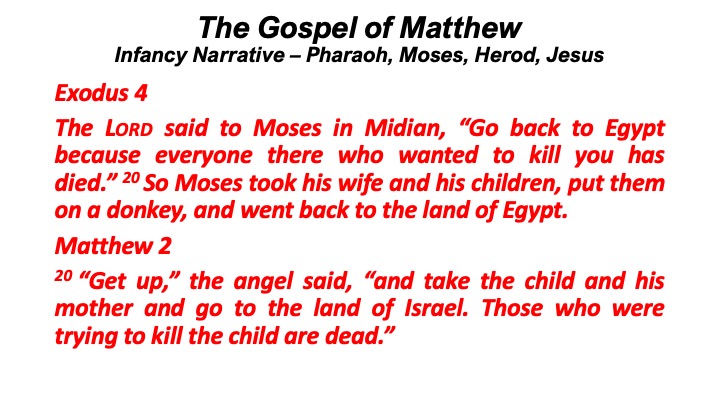
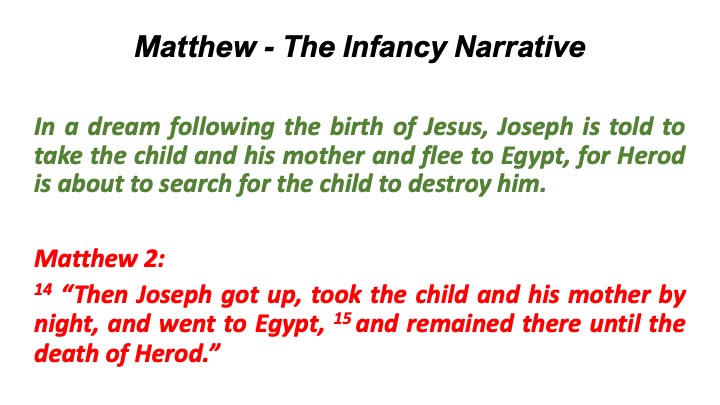
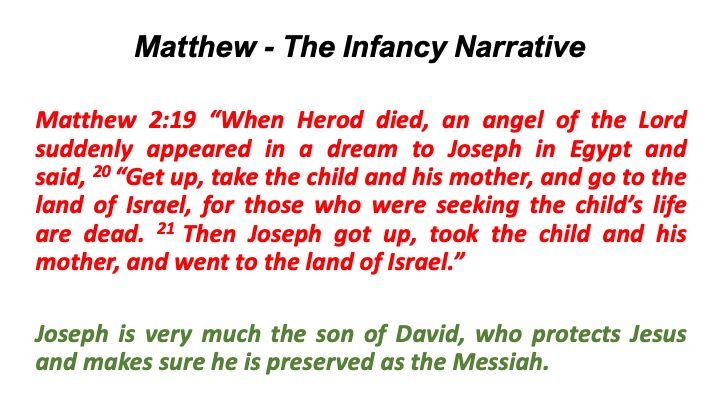
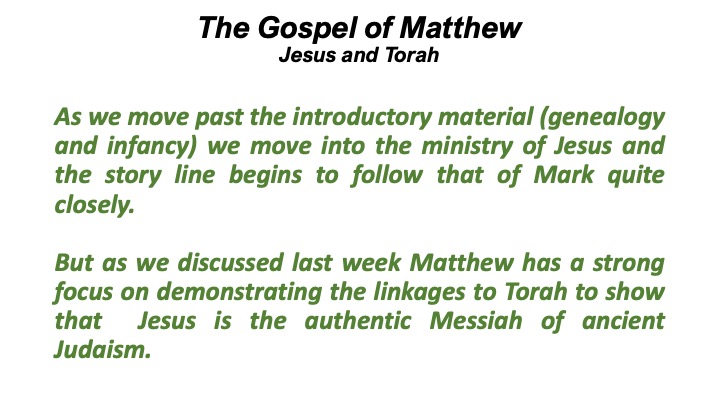
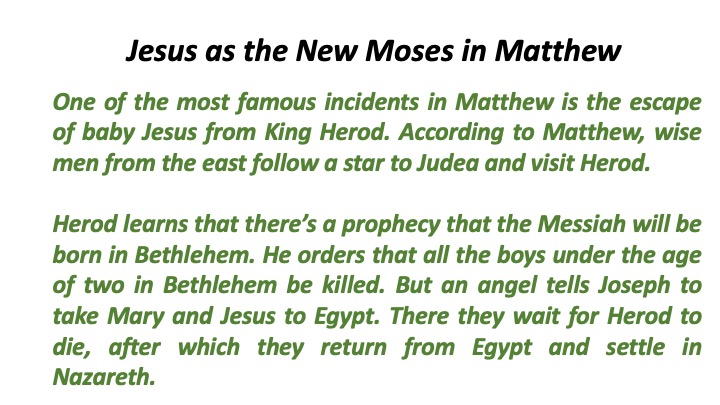
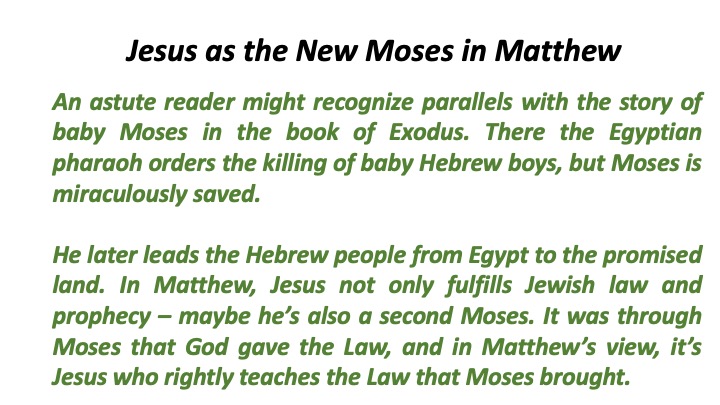
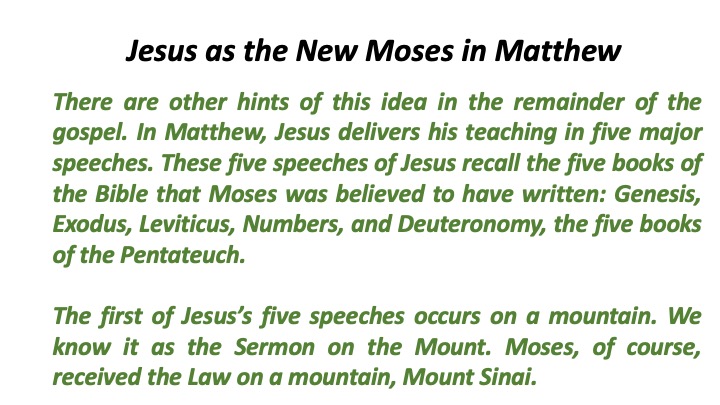
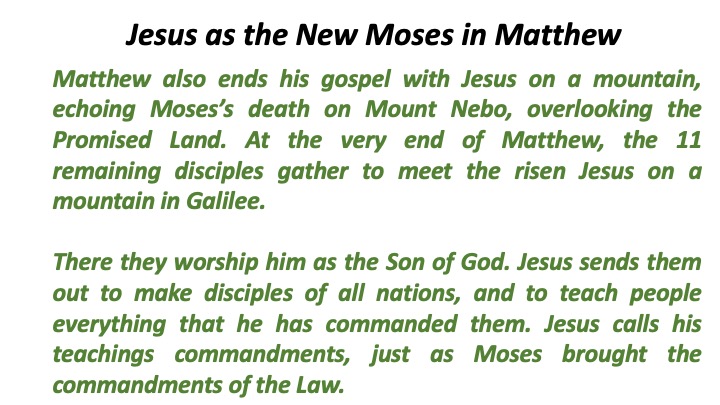
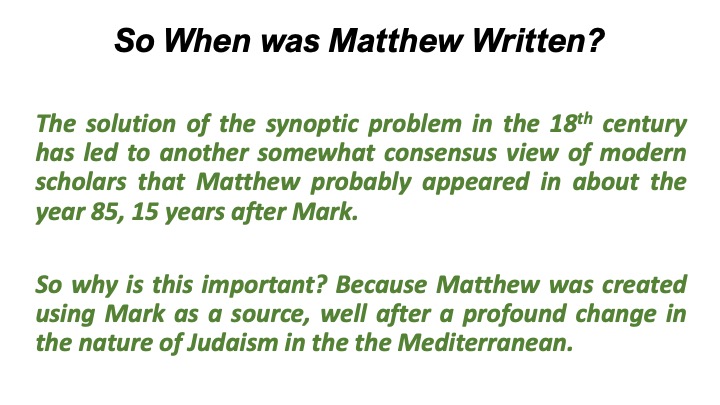
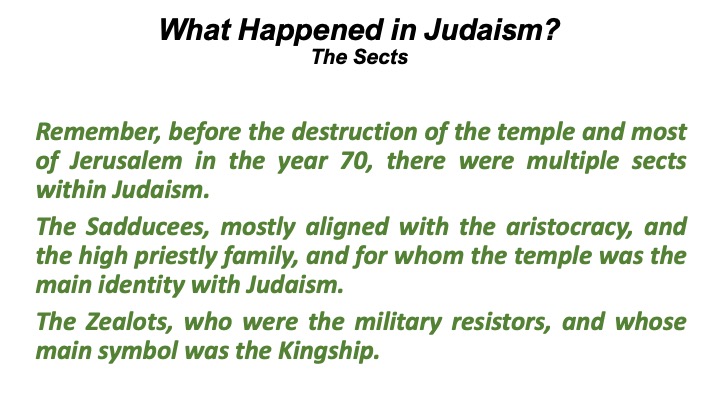
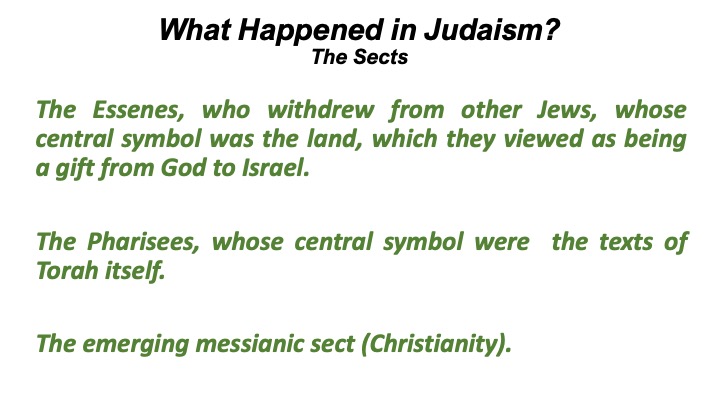
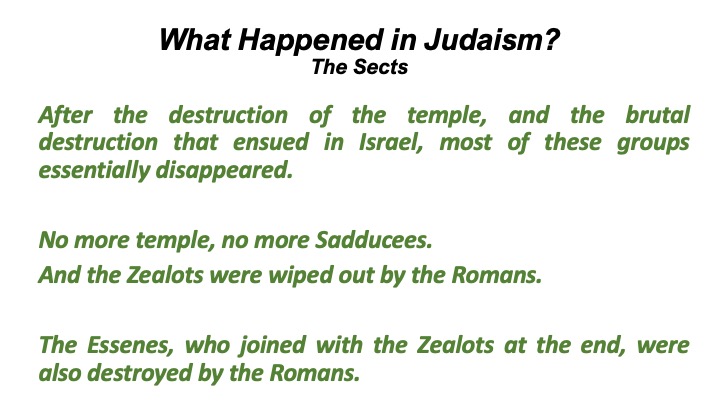
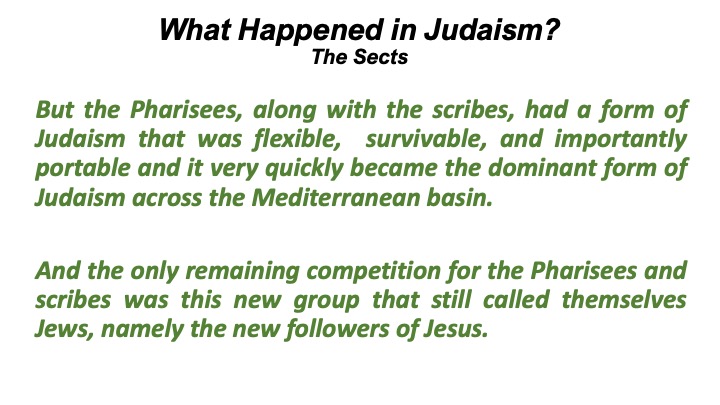
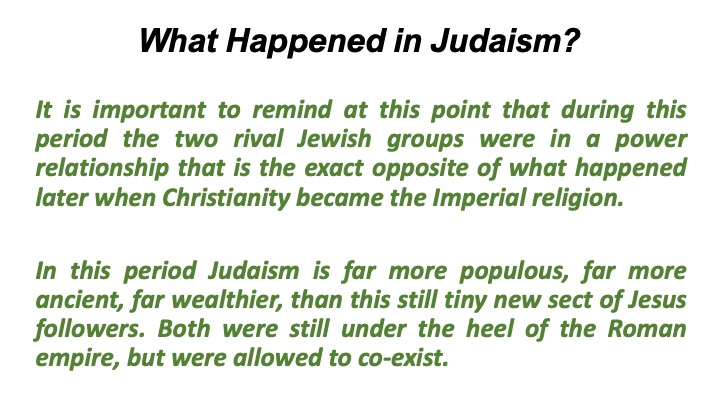
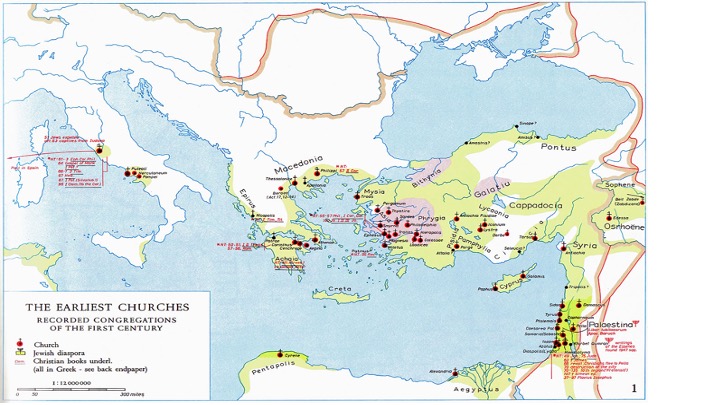
Notice on this 1st Century map the yellowish color, which represents the Jewish Diaspora, which had been spreading across the Mediterranean basin even before the 1st century.
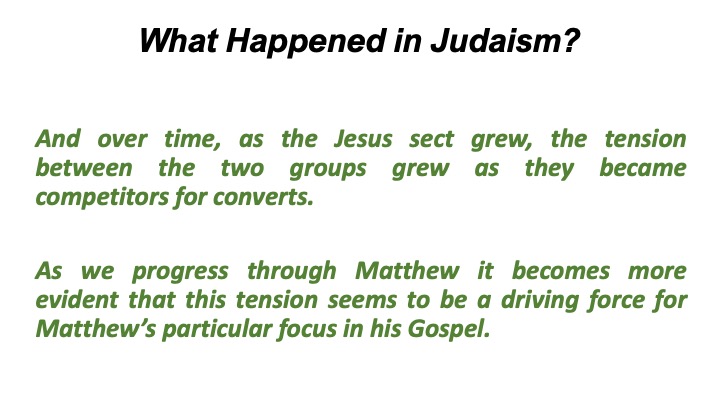
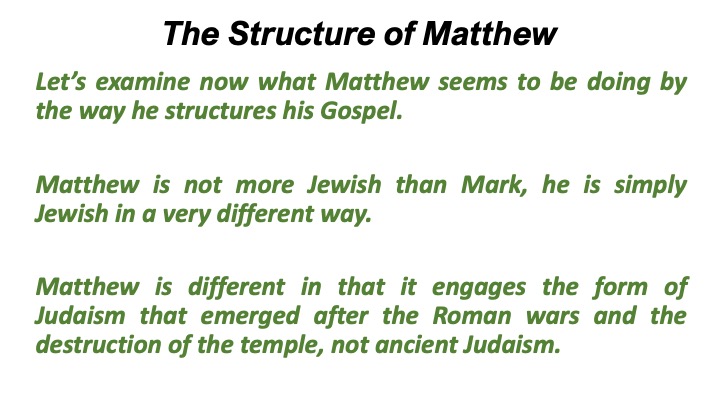
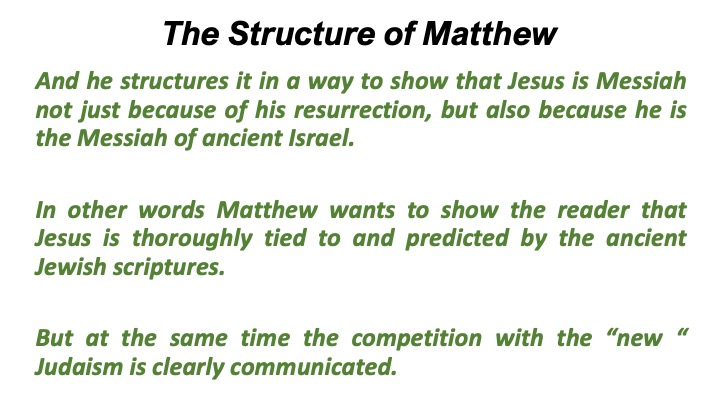
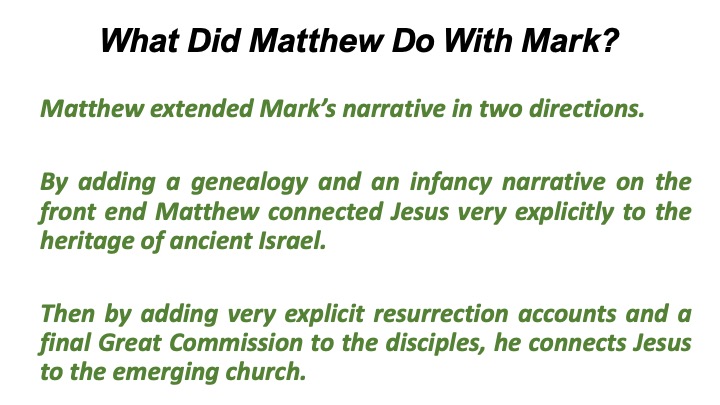
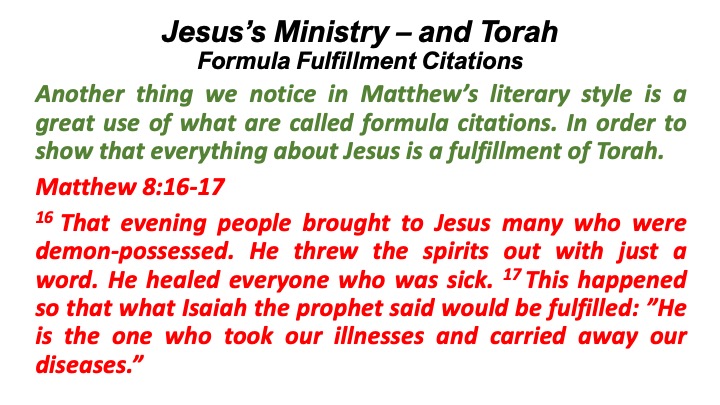
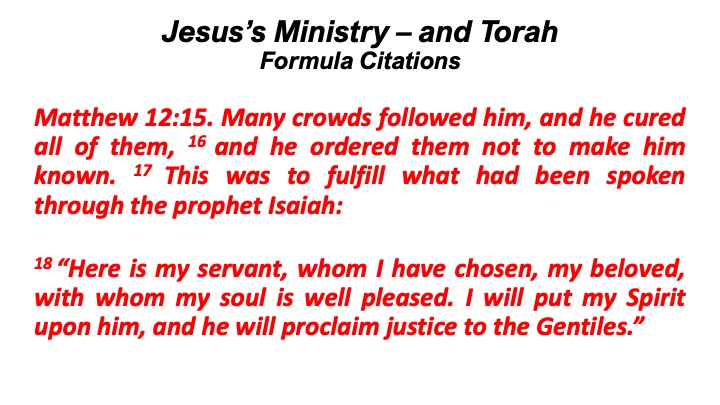
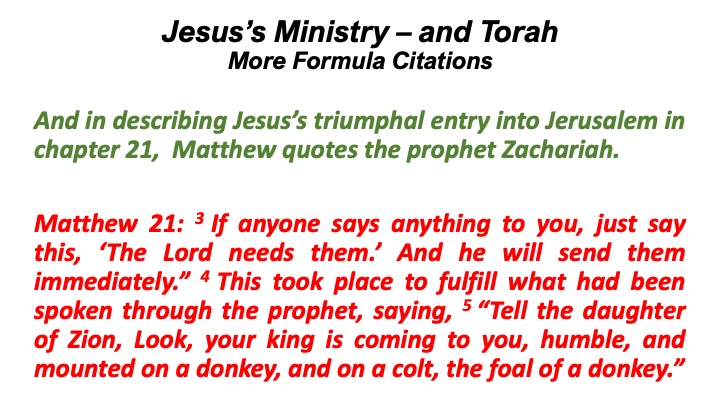
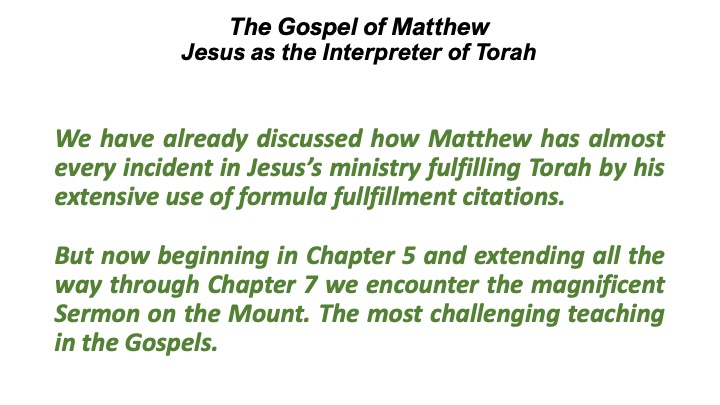
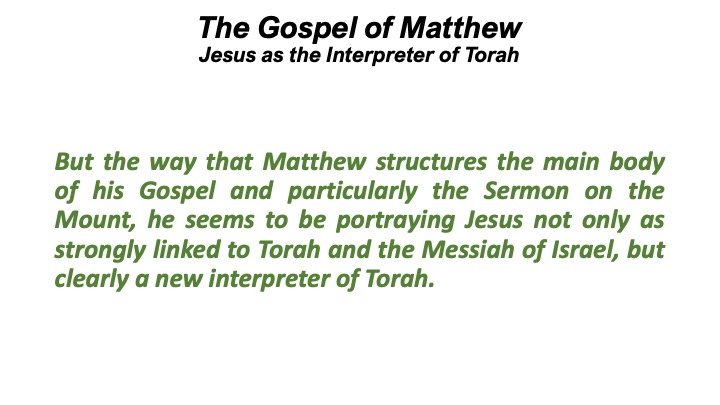
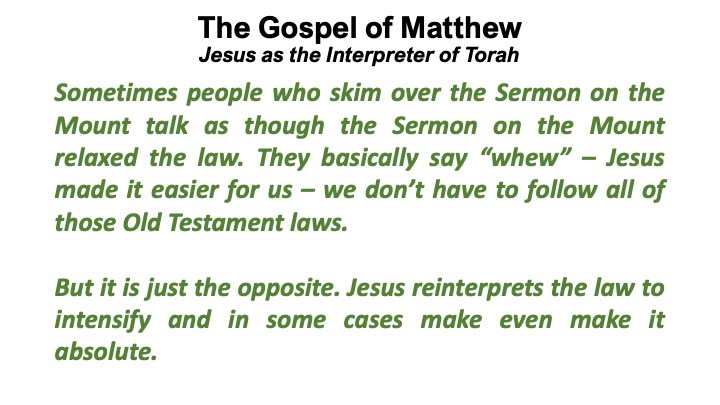
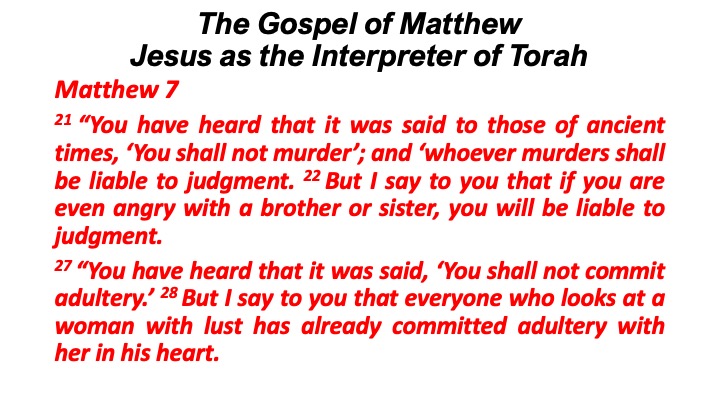
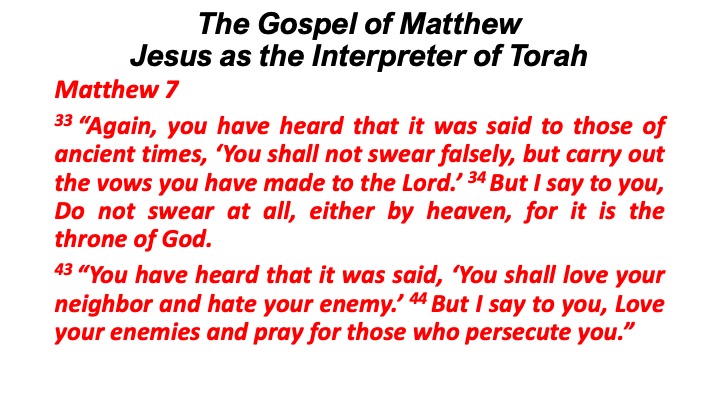
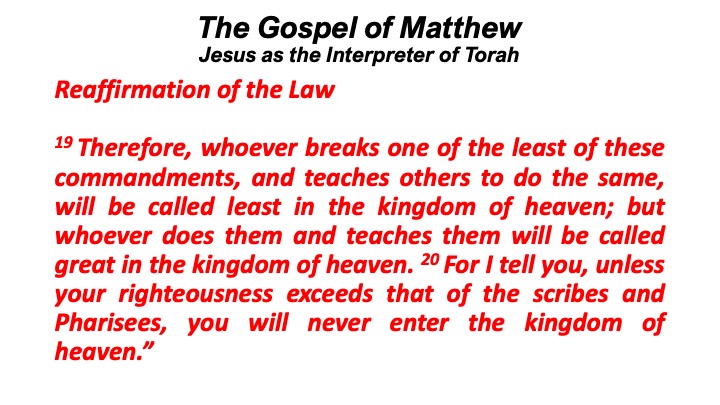
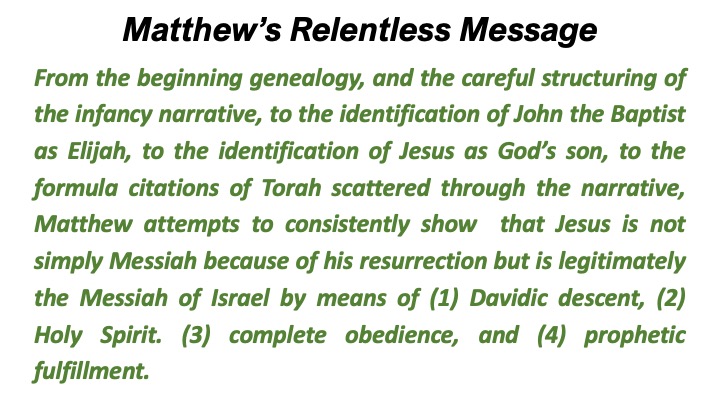
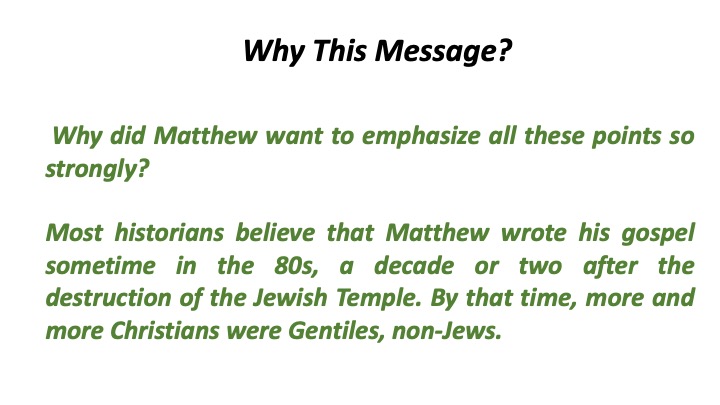
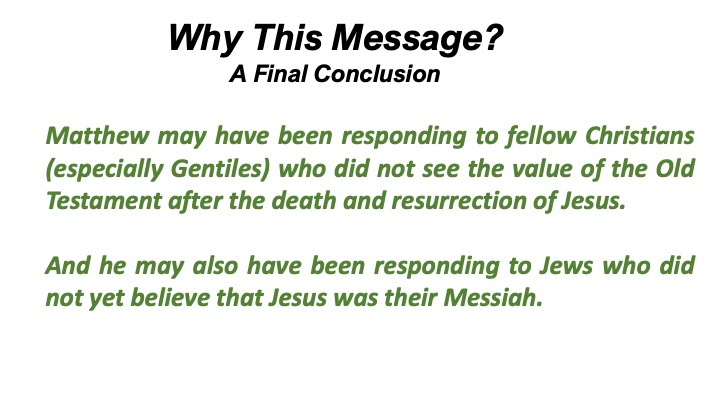
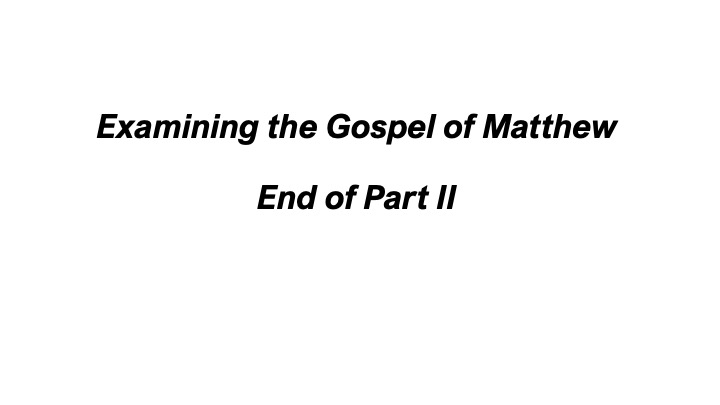

Text of Examining the gospel of Matthew
Examining the Gospel of Matthew
Where Do We Begin Today?
Let’s begin where Matthew began. In chapters 1 and 2.
These two chapters contain the genealogy of Jesus and the infancy narrative of Jesus. And they are carefully constructed to convey Matthew’s theological views of Jesus.
Examining The Gospel of Matthew
Chapters 1 & 2 – Genealogy and Infancy Narrative
Scholars do not see Matthew writing as a historian.
They see chapters 1 and 2 of Matthew as a theological prologue to his Gospel rather than a historical narrative.
This interpretation does not imply that there is no factual history in Matthew’s infancy narrative but rather that history is not Matthew’s primary intention at all.
His intention is to identify Jesus as the Messiah, the son of David, the son of Abraham, the Son of God, another Moses and at the same time identify Jesus as having a mission to the Gentiles.
One scholar describes Chapters 1 and 2 as Matthew’s Gospel in miniature.
Although we usually describe the stories of the birth of Jesus as the infancy narratives, they do not actually give us information about Jesus’ infancy and childhood.
Rather, they are directed to the question, “Who is Jesus of Nazareth?”
Examining the Gospel of Matthew - Jesus & Abraham
1 A record of the ancestors of Jesus Christ, son of David, son of Abraham:
2 Abraham was the father of Isaac.
Isaac was the father of Jacob.
Jacob was the father of Judah and his brothers.
3 Judah was the father of Perez and Zerah,
whose mother was Tamar.
Perez was the father of Hezron.
Hezron was the father of Aram.
4 Aram was the father of Amminadab.
Amminadab was the father of Nahshon.
Nahshon was the father of Salmon.
5 Salmon was the father of Boaz, whose mother was Rahab.
Boaz was the father of Obed, whose mother was Ruth.
Obed was the father of Jesse.
6 Jesse was the father of David the king.
David was the father of Solomon,
whose mother had been the wife of Uriah.
7 Solomon was the father of Rehoboam.
Rehoboam was the father of Abijah.
Abijah was the father of Asaph.
8 Asaph was the father of Jehoshaphat.
Jehoshaphat was the father of Joram.
Joram was the father of Uzziah.
9 Uzziah was the father of Jotham.
Jotham was the father of Ahaz.
Ahaz was the father of Hezekiah.
10 Hezekiah was the father of Manasseh.
Manasseh was the father of Amos.
Amos was the father of Josiah.
11 Josiah was the father of Jechoniah and his brothers.
This was at the time of the exile to Babylon.
12 After the exile to Babylon: Jechoniah was the father of Shealtiel.
Shealtiel was the father of Zerubbabel.
13 Zerubbabel was the father of Abiud.
Abiud was the father of Eliakim.
Eliakim was the father of Azor.
14 Azor was the father of Zadok.
Zadok was the father of Achim.
Achim was the father of Eliud.
15 Eliud was the father of Eleazar.
Eleazar was the father of Matthan.
Matthan was the father of Jacob.
16 Jacob was the father of Joseph, the husband of Mary, of whom Jesus was born, who is called the Christ.
17 So there were fourteen generations from Abraham to David, fourteen generations from David to the exile to Babylon, and fourteen generations from the exile to Babylon to the Christ.
Examining the Gospel of Matthew – The Infancy Narrative
18 This is how the birth of Jesus Christ took place. When Mary his mother was engaged to Joseph, before they were married, she became pregnant by the Holy Spirit. 19 Joseph her husband was a righteous man. Because he didn’t want to humiliate her, he decided to call off their engagement quietly. 20 As he was thinking about this, an angel from the Lord appeared to him in a dream and said, “Joseph son of David, don’t be afraid to take Mary as your wife, because the child she carries was conceived by the Holy Spirit.
21 She will give birth to a son, and you will call him Jesus, because he will save his people from their sins.” 22 Now all of this took place so that what the Lord had spoken through the prophet would be fulfilled:
23 Look! A virgin will become pregnant and give birth to a son, and they will call him, Emmanuel.(Emmanuel means “God with us.”)
24 When Joseph woke up, he did just as an angel from God commanded and took Mary as his wife. 25 But he didn’t have sexual relations with her until she gave birth to a son. Joseph called him Jesus.
Matthew demonstrated that Jesus is not the biological son of Joseph and yet his Davidic ancestry is traced through Joseph. In accepting the son as his own, Joseph gives Jesus a Davidic genealogy.
This Davidic descent comes, not through natural paternity, but through legal paternity. Joseph, in exercising the father’s right to name the child, becomes the legal father, the legitimate father, according to Jewish law.
So both Mary and Joseph have their role to play. Through Joseph, Jesus is of Davidic descent. Through Mary, he is begotten as Son of God.
And also importantly, he demonstrated Jesus’s Abrahamic ancestry, which ties Jesus into God’s larger promise to Abraham that his ancestors will be a blessing to all people, including Gentiles.
Examining The Gospel of Matthew
Infancy Narrative – The Wise Men
And to immediately develop the other side of Matthew’s theology:
Matthew 2
1 In the time of King Herod, after Jesus was born in Bethlehem of Judea, wise men from the East came to Jerusalem, 2 asking, “Where is the child who has been born king of the Jews? For we observed his star at its rising and have come to pay him homage.”
And What it the Significance of this visit?
The very first visitors to pay homage to Jesus are Gentiles from the East.
Jesus has come for the Gentiles as well!
Examining The Gospel of Matthew
Infancy Narrative – Pharaoh, Moses, Herod, Jesus
Matthew 2:13-23 then goes on to narrate Herod’s failure to kill the child because of the move of Joseph, Mary and Jesus to Egypt.
The massacre of the children in Bethlehem by Herod parallels Pharaoh’s slaughter of male children in Egypt. Moses, however, escaped. So did Jesus.
And What About Mary?
When we then move next from the genealogy to the infancy narrative one of the striking features we notice is that it is not Mary that is the hero (or heroine).
We tend to be more familiar with Luke’s account, in which it is Mary is the one who hears messages from God. Mary is the one who believes and interprets events. Joseph is almost ignored in Luke. He is just a part of the marriage.
In Matthew’s account Mary is almost completely passive. It is Joseph who is the hero – the one who is the completely obedient and decisive one.
Joseph emerges as a striking figure. When an angel appears to him in a dream and explains that Mary is pregnant from the Holy Spirit and says ”Joseph – son of David – do not fear to take Mary as your wife.” Joseph awakes from his dream and immediately did as the angel commanded.
Examining The Gospel of Matthew
Infancy Narrative – Pharaoh, Moses, Herod, Jesus
The angel’s words to Joseph in 2:20 almost repeat the Lord’s words to Moses in Exodus 4:19 which pertain to the pharaoh’s death.
The pharaoh’s death allowed Moses to lead his people from Egypt to the Promised Land. Herod’s death allowed Jesus to return from Egypt to the Promised Land.
Exodus 4
The Lord said to Moses in Midian, “Go back to Egypt because everyone there who wanted to kill you has died.” 20 So Moses took his wife and his children, put them on a donkey, and went back to the land of Egypt.
Matthew 2
20 “Get up,” the angel said, “and take the child and his mother and go to the land of Israel. Those who were trying to kill the child are dead.”
Matthew - The Infancy Narrative
In a dream following the birth of Jesus, Joseph is told to take the child and his mother and flee to Egypt, for Herod is about to search for the child to destroy him.
Matthew 2:
14 “Then Joseph got up, took the child and his mother by night, and went to Egypt, 15 and remained there until the death of Herod.”
Matthew 2:19 “When Herod died, an angel of the Lord suddenly appeared in a dream to Joseph in Egypt and said, 20 “Get up, take the child and his mother, and go to the land of Israel, for those who were seeking the child’s life are dead. 21 Then Joseph got up, took the child and his mother, and went to the land of Israel.”
Joseph is very much the son of David, the hero who protects Jesus and makes sure he is preserved as the Messiah.
Examining The Gospel of Matthew
Jesus and Torah
As we move past the introductory material (genealogy and infancy) we move into the ministry of Jesus and the story line begins to follow that of Mark quite closely.
But as we discussed last week Matthew has a strong focus on demonstrating the linkages to Torah to show that Jesus is the authentic Messiah of ancient Judaism.
Examining thew Gospel of Matthew
Jesus as the New Moses in Matthew
One of the most famous incidents in Matthew is the escape of baby Jesus from King Herod. According to Matthew, wise men from the east follow a star to Judea and visit Herod.
Herod learns that there’s a prophecy that the Messiah will be born in Bethlehem. He orders that all the boys under the age of two in Bethlehem be killed. But an angel tells Joseph to take Mary and Jesus to Egypt. There they wait for Herod to die, after which they return from Egypt and settle in Nazareth.
An astute reader might recognize parallels with the story of baby Moses in the book of Exodus. There the Egyptian pharaoh orders the killing of baby Hebrew boys, but Moses is miraculously saved.
He later leads the Hebrew people from Egypt to the promised land. In Matthew, Jesus not only fulfills Jewish law and prophecy – maybe he’s also a second Moses. It was through Moses that God gave the Law, and in Matthew’s view, it’s Jesus who rightly teaches the Law that Moses brought.
There are other hints of this idea in the remainder of the gospel. In Matthew, Jesus delivers his teaching in five major speeches. These five speeches of Jesus recall the five books of the Bible that Moses was believed to have written: Genesis, Exodus, Leviticus, Numbers, and Deuteronomy, the five books of the Pentateuch.
The first of Jesus’s five speeches occurs on a mountain. We know it as the Sermon on the Mount. Moses, of course, received the Law on a mountain, Mount Sinai.
Matthew also ends his gospel with Jesus on a mountain, echoing Moses’s death on Mount Nebo, overlooking the Promised Land. At the very end of Matthew, the 11 remaining disciples gather to meet the risen Jesus on a mountain in Galilee.
There they worship him as the Son of God. Jesus sends them out to make disciples of all nations, and to teach people everything that he has commanded them. Jesus calls his teachings commandments, just as Moses brought the commandments of the Law.
So When was Matthew Written?
The solution of the synoptic problem in the 18th century has led to another somewhat consensus view of modern scholars that Matthew probably appeared in about the year 85, 15 years after Mark.
So why is this important? Because Matthew was created using Mark as a source, well after a profound change in the nature of Judaism in the Mediterranean.
What Happened in Judaism?
The Sects
Remember, before the destruction of the temple and most of Jerusalem in the year 70, there were multiple sects within Judaism.
The Sadducees, mostly aligned with the aristocracy, and the high priestly family, and for whom the temple was the main identity with Judaism.
The Zealots, who were the military resistors, and whose main symbol was the Kingship.
The Essenes, who withdrew from other Jews, whose central symbol was the land, which they viewed as being a gift from God to Israel.
The Pharisees, whose central symbol were the texts of Torah itself.
The emerging messianic sect (Christianity).
After the destruction of the temple, and the brutal destruction that ensued in Israel, most of these groups essentially disappeared.
No more temple, no more Sadducees.
And the Zealots were wiped out by the Romans.
The Essenes, who joined with the Zealots at the end, were also destroyed by the Romans.
But the Pharisees, along with the scribes, had a form of Judaism that was flexible, survivable, and importantly portable and it very quickly became the dominant form of Judaism across the Mediterranean basin.
And the only remaining competition for the Pharisees and scribes was this new group that still called themselves Jews, namely the new followers of Jesus.
Examining The Gospel of Matthew - What Happened in Judaism?
It is important to remind at this point that during this period the two rival Jewish groups were in a power relationship that is the exact opposite of what happened later when Christianity became the Imperial religion.
In this period Judaism is far more populous, far more ancient, far wealthier, than this still tiny new sect of Jesus followers. Both were still under the heel of the Roman empire but were allowed to co-exist.
And over time, as the Jesus sect grew, the tension between the two groups grew as they became competitors for converts.
As we progress through Matthew it becomes more evident that this tension seems to be a driving force for Matthew’s particular focus in his Gospel.
Examining the Gospel of Matthew - The Structure of Matthew
Let’s examine now what Matthew seems to be doing by the way he structures his Gospel.
Matthew is not more Jewish than Mark, he is simply Jewish in a very different way.
Matthew is different in that it engages the form of Judaism that emerged after the Roman wars and the destruction of the temple, not ancient Judaism.
And he structures it in a way to show that Jesus is Messiah not just because of his resurrection, but also because he is the Messiah of ancient Israel.
In other words Matthew wants to show the reader that Jesus is thoroughly tied to and predicted by the ancient Jewish scriptures.
But at the same time the competition with the “new“ Judaism is clearly communicated.
What Did Matthew Do With Mark?
Matthew extended Mark’s narrative in two directions.
By adding a genealogy and an infancy narrative on the front end Matthew connected Jesus very explicitly to the heritage of ancient Israel.
Then by adding very explicit resurrection accounts and a final Great Commission to the disciples, he connects Jesus to the emerging church.
Jesus’s Ministry – and Torah
Formula Fulfillment Citations
Another thing we notice in Matthew’s literary style is a great use of what are called formula citations. In order to show that everything about Jesus is a fulfillment of Torah.
Matthew 8:16-17
16 That evening people brought to Jesus many who were demon-possessed. He threw the spirits out with just a word. He healed everyone who was sick. 17 This happened so that what Isaiah the prophet said would be fulfilled: ”He is the one who took our illnesses and carried away our diseases.”
Matthew 12:15. Many crowds followed him, and he cured all of them, 16 and he ordered them not to make him known. 17 This was to fulfill what had been spoken through the prophet Isaiah:
18 “Here is my servant, whom I have chosen, my beloved, with whom my soul is well pleased. I will put my Spirit upon him, and he will proclaim justice to the Gentiles.”
And in describing Jesus’s triumphal entry into Jerusalem in chapter 21 Matthew quotes the prophet Zachariah.
Matthew 21: 3 If anyone says anything to you, just say this, ‘The Lord needs them.’ And he will send them immediately.” 4 This took place to fulfill what had been spoken through the prophet, saying, 5 “Tell the daughter of Zion, Look, your king is coming to you, humble, and mounted on a donkey, and on a colt, the foal of a donkey.”
Examining The Gospel of Matthew
Jesus as the Interpreter of Torah
We have already discussed how Matthew has almost every incident in Jesus’s ministry fulfilling Torah by his extensive use of formula fulfillment citations.
But now beginning in Chapter 5 and extending all the way through Chapter 7 we encounter the magnificent Sermon on the Mount. The most challenging teaching in the Gospels.
But the way that Matthew structures the main body of his Gospel and particularly the Sermon on the Mount, he seems to be portraying Jesus not only as strongly linked to Torah and the Messiah of Israel, but clearly a new interpreter of Torah.
Sometimes people who skim over the Sermon on the Mount talk as though the Sermon on the Mount relaxed the law. They basically say “whew” – Jesus made it easier for us – we don’t have to follow all of those Old Testament laws.
But it is just the opposite. Jesus reinterprets the law to intensify and in some cases make even make it absolute.
Matthew 7
21 “You have heard that it was said to those of ancient times, ‘You shall not murder’; and ‘whoever murders shall be liable to judgment. 22 But I say to you that if you are even angry with a brother or sister, you will be liable to judgment.
27 “You have heard that it was said, ‘You shall not commit adultery.’ 28 But I say to you that everyone who looks at a woman with lust has already committed adultery with her in his heart.
Matthew 7
33 “Again, you have heard that it was said to those of ancient times, ‘You shall not swear falsely, but carry out the vows you have made to the Lord.’ 34 But I say to you, Do not swear at all, either by heaven, for it is the throne of God.
43 “You have heard that it was said, ‘You shall love your neighbor and hate your enemy.’ 44 But I say to you, Love your enemies and pray for those who persecute you.”
Reaffirmation of the Law
Matthew 5:17. 17 “Do not think that I have come to abolish the law or the prophets; I have come not to abolish but to fulfill. 18 For truly I tell you, until heaven and earth pass away, not one letter, not one stroke of a letter, will pass from the law until all is accomplished. 19 Therefore, whoever breaks one of the least of these commandments, and teaches others to do the same, will be called least in the kingdom of heaven; but whoever does them and teaches them will be called great in the kingdom of heaven. 20 For I tell you, unless your righteousness exceeds that of the scribes and Pharisees, you will never enter the kingdom of heaven.”
Matthew’s Relentless Message
From the beginning genealogy, and the careful structuring of the infancy narrative, to the identification of John the Baptist as Elijah, to the identification of Jesus as God’s son, to the formula citations of Torah scattered through the narrative, Matthew attempts to consistently show that Jesus is not simply Messiah because of his resurrection but is legitimately the Messiah of Israel by means of (1) Davidic descent, (2) Holy Spirit. (3) complete obedience, and (4) prophetic fulfillment.
Examining the Gospel of Matthew - Why This Message?
Why did Matthew want to emphasize all these points so strongly?
Most historians believe that Matthew wrote his gospel sometime in the 80s, a decade or two after the destruction of the Jewish Temple. By that time, more and more Christians were Gentiles, non-Jews.
A Final Conclusion
Matthew may have been responding to fellow Christians (especially Gentiles) who did not see the value of the Old Testament after the death and resurrection of Jesus.
And he may also have been responding to Jews who did not yet believe that Jesus was their Messiah.
Examining the Gospel of Matthew
End of Part II
Thank you.
Next Week
An Austin Samaritan’s Update
by John Doty